
Ancistrus is a genus of nocturnal freshwater fish in the family Loricariidae of order Siluriformes, native to freshwater habitats in South America and Panama. Fish of this genus are common in the aquarium trade where they are known as bushynose or bristlenose catfish. In the aquarium hobby they are often referred to as bushynose or bristlenose plecos instead, but this may lead to confusion as "pleco" usually is used for Hypostomus plecostomus and its allies and is often used as a catchall term for any loricariids remotely resembling that species.

Charles Tate Regan FRS was a British ichthyologist, working mainly around the beginning of the 20th century. He did extensive work on fish classification schemes.
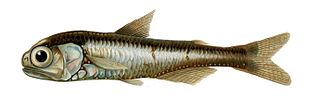
Lanternfish are small mesopelagic fish of the large family Myctophidae. One of two families in the order Myctophiformes, the Myctophidae are represented by 246 species in 33 genera, and are found in oceans worldwide. Lanternfishes are aptly named after their conspicuous use of bioluminescence. Their sister family, the Neoscopelidae, are much fewer in number but superficially very similar; at least one neoscopelid shares the common name "lanternfish": the large-scaled lantern fish, Neoscopelus macrolepidotus.

Symbolophorus is a genus of lanternfishes. It feeds on various small forms of sea life, in particular fish. Some species in this genus are known to exhibit the Stylophthalmine trait in their larval form

Protomyctophum is a genus of lanternfishes.

Gymnoscopelus is a genus of lanternfishes. The name is from the Greek gymnos, "naked" and skopelos, "lanternfish."

Diaphus is a genus of lanternfishes. It is the most species-rich lanternfish genus.

Warming's lantern fish, Ceratoscopelus warmingii, is a lanternfish of the family Myctophidae, found circumglobally in both hemispheres, at depths of between 700 and 1,500 m during the day and between 20 and 200 m at night. Its length is about 8 cm (3.15 in).
Hisonotus is a genus of armored catfishes native to South America. Species of Hisonotus and Curculionichthys are the only representatives of the subfamily Otothyrinae having serrae on the posterior edge of the pectoral fin spine. These species are small fishes, generally found in small fast flowing streams, where they grasp to the branches and leaves of aquatic or subaquatic plants. The species of this genus mostly occur in Atlantic coastal streams of southern Brazil and the Paraguay-Paraná system of southern South America. They are also distributed in the Río de La Plata basin and coastal rivers of southeastern Brazil.

Myctophum is a genus of lanternfishes, some species of which, such as M. punctatum, are noted for having the Stylophthalmine trait in their larval form.

Benthosema is a genus of lanternfishes.
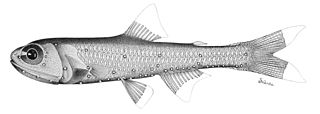
Bolinichthys is a genus of lanternfishes.
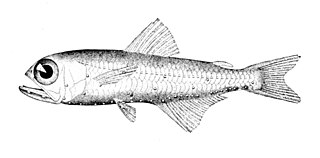
Hygophum is a genus of lanternfishes.
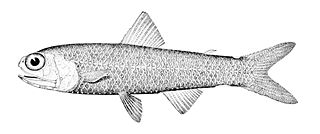
Lampadena is a genus of lanternfishes.

Lobianchia is a genus of lanternfishes found in the Atlantic Ocean.
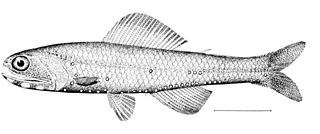
Notoscopelus is a genus of lanternfishes.
Stenobrachius is a genus of lanternfishes.

Neoscopelus is a genus of blackchins.
The northern lampfish, also known as smallfin lanternfish, is a small oceanic fish in the family Myctophidae. First described by husband and wife ichthyologists Carl H. and Rosa Smith Eigenmann in 1890, it is named for the numerous small round photophores that line the ventral surface of its head and body.
Zaniolepis frenata, also known as the shortspine combfish, is a species of ray-finned fish belonging to the family Zaniolepididae.The species occurs in the eastern Pacific Ocean.
















